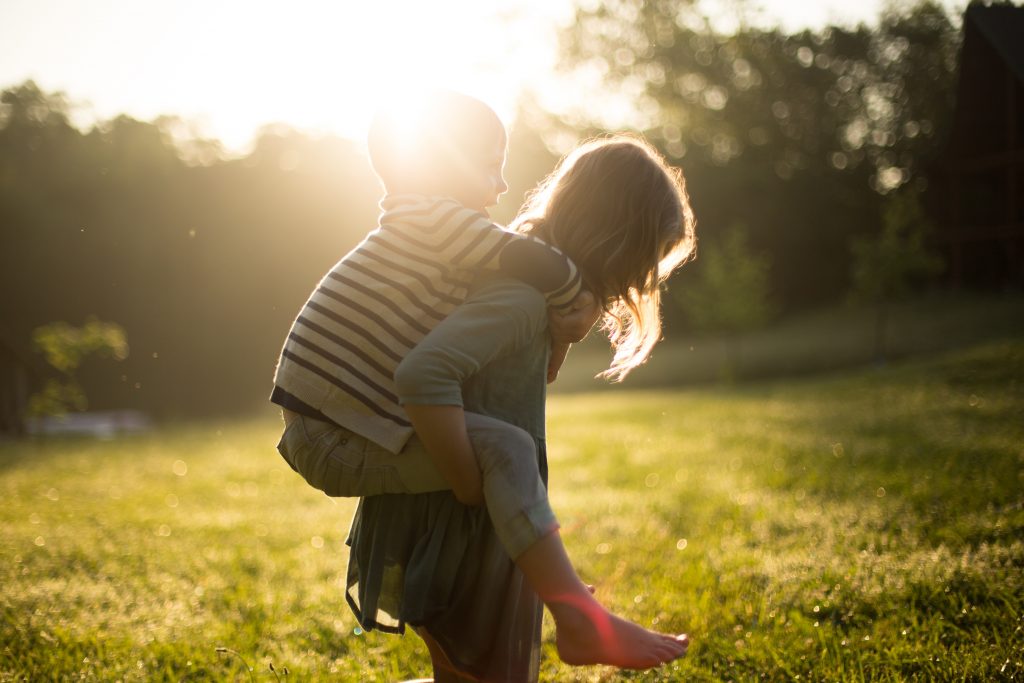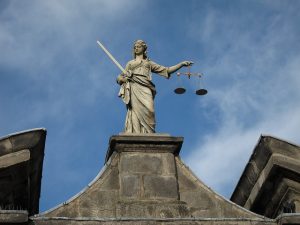Children who commit serious crimes present a particular challenge for criminal justice systems. Children are still developing their understanding of consequences, and of right and wrong: so, should they be tried like adults?
In 1993, the trial of two boys aged ten-and-a-half, Robert Thompson and Jon Venables, for the brutal murder of toddler James Bulger, sparked debate on how child defendants should be treated in court. Twenty-five years on from the case, we consider its legacy on a child’s right to a fair trial.
The Background to the Case

Preston Crown Court. Image credit: SteHLiverpool / Flickr
On 12 February 1993, Thompson and Venables played truant from school and went to a nearby shopping centre. There they abducted two-year-old James Bulger, and beat him to his death. Thompson and Venables were tried by jury in Preston Crown Court, convicted of murder, and sentenced to 15 years in a secure young person’s centre.
A year later, Thompson and Venables applied for a hearing at the Human Rights Court, arguing that several of their human rights had been breached by the way their trial had been managed.
Article 6 of the Human Rights Convention protects the right to a fair trial. It states that everyone is entitled to a fair and public hearing, within a reasonable timeframe, and by an independent and impartial tribunal. It also states that the press and public may be excluded from part or all of the trial to protect certain interests, such as the interests of juveniles.
Who is a Child in the Context of Criminal Justice?

Image credit: Jenn Evelyn / Unsplash
Children are vulnerable in ways that adults generally aren’t. As a result, the UN put in place the UN Convention of the Rights of the Child in 1990, to recommend stricter safeguards on the rights of children, and the UK has signed up to this Convention.
As such, a child is defined in UK law, and the UN Convention on the Rights of the Child, as anyone under the age of 18.
The age of criminal responsibility is ten years old in England and Wales (and eight in Scotland), and Thompson and Venables were just over this age at the time they committed the offence. A child younger than ten cannot be arrested or charged with a crime.
As a result of the Thompson and Venables case, children now also have more protections during a trial.
So, What Happened at the Human Rights Court?

The European Court of Human Rights. Image credit: Emmanuel Cattier / Flickr
In 1999, the Human Rights Court heard their case. It noted, in its separate judgments on Thompson and Venables, that this was the first time it had considered the right to a fair trial for a defendant below the age of 18. The Court found that the UK had breached the boys’ right to a fair trial.
The Court recognised that some steps had been taken to safeguard Thompson and Venables’ rights to a fair trial: (1) they were taken to the court room a number of times before trial with their social workers so that they might be more familiar with the setting; (2) the court day was shortened to mimic the primary school day; (3) they did not have to give evidence, instead their police interviews were played out; and (4) their names were withheld during trial.
However, the Court flagged the following factors that swayed their view:
- The presence of the public and press: members of the public and press can sit in a public gallery, to ensure justice is delivered openly and transparently. Despite this aim, the Court considered that a child is likely to find the increased number of people to be intimidating and scary.
- The ritual and formality of a Crown Court: the Court noted the potentially confusing formalities of the English Crown Court, an adult court, such as the formal gowns and wigs worn by barristers, and the raised dock in which the defendants had to sit. It concluded that such formalities must have seemed intimidating and incomprehensible to a child.
- Limited explanation of procedure and events at trial: explanations of the court proceedings should have been provided to take account of the defendants’ age, their child-like maturity, and their intelligence and emotional capability.
The Court concluded that these factors, and the stress they caused, prevented the boys from talking to their lawyers and social workers during the trial. The Court found it highly likely that they failed to understand the proceedings, and were unable to fully participate in their own trial.
Why Does this Ruling Matter?

The scales of justice. Image credit: sparkle-motion / Flickr
In the matter of Thompson and Venables, the UK justice system had found itself ill-equipped to prosecute child-defendants charged with murder. However, in the aftermath of this case, the UK government made welcome amendments to its procedures. Children can now only be tried in a Youth Court, which automatically implements reporting restrictions to protect the defendant’s anonymity. Also, additional steps are more routinely taken in a Youth Court to ensure a child defendant understands his or her trial.
How a country deals with crimes committed by children is now considered one of the benchmarks of social development. Though it may have come at an incredibly high cost after the Bulger case, human rights principles have influenced UK law to ensure that all individuals are treated with respect and dignity, irrespective of their criminal culpability.






